8-4. The E text appears to divide
between the end of line a7 and the beginning of line a8, because
we can see that
the last pair of glyphs in Ea7 is repeated in the first glyph pair in
line Ea8:
|
July 24 |
25 |
26 |
27 (208 → 256 - 48) |
 |
 |
 |
 |
|
Ea7-36 |
Ea7-37 |
Ea7-38 |
Ea7-39 (256 → 4 *
64) |
|
ka rere - i te hatu hoi |
ki te manu ariga ruku
hia |
te tamaiti |
te raa - te ragi |
|
Ariga. Face, cheek. 1.
Ariga ora, (lit. 'living face')
keepsake, memento, memory, souvenir
(of someone). This used to be the
name given the moai (stone
statues) carved as memories of the
dead. 2. Ariga ora is also
used in the generic sense of a
memento, a keepsake: he mate te
matu'a he ato tepoki i te rîu o
toona matu'a; he-ariga ora o toona
matu'a [when] the father dies,
[and] the son sings a riu for
his father, this constitutes an
ariga ora of his father. Vanaga.
Face, aspect, expression, mien,
visage, stature, superficies. T Ma.:
aria, to resemble.
Hakaariga, to encroach.
Churchill. Ariari, sharp, the
edge of a sword. Ta.: ariari,
transparence, brightness. Ha.:
aliali, white. Churchill.
Ruku.
(Also rukuruku):
To dive; to fish underwater; diving;
i-turu-era au ki tai, he-ûi koai
te tagata era, e-ruku-mai-era i te
îka, i te ura, as I went down to
the sea, I saw who those people
were, who were fishing underwater
for fish and lobsters. Vanaga. To
bathe, to immerse, to swim face
down, to dive, to leap into the
water from a height. Hakaruku,
to cover with water, to immerse, to
submerge, to moisten, to wash, to
drink. P Mgv.: ruku, to dive,
to plunge. Mq.: úku, to dive,
to immerse. Churchill. |
|
REVERSED NAKSHATRA → CLOSE TO THE
FULL MOON: |
|
GREDI (Goat) =
α
Capricorni
(307.2),
σ
Capricorni (307.5),
ALSHAT (The Sheep) =
ν
Capricorni
(307.9) |
Al Sa’d al
Dhabih-20 (Lucky One of the
Slaughterers)
/
Ox / Heard Boy
(Buffalo)
DABIH =
β
Capricorni
(308.0),
κ
Sagittarii (308.1),
SADIR (Hen's Breast) =
γ
Cygni (308.4),
PEACOCK =
α
Pavonis
(308.7)
*267.0 = *308.4 - *41.4 |
KHUFU
OKUL =
π
Capricorni
(309.6),
BOS =
ρ
Capricorni
(309.9)
ARNEB (α Leporis)
MINTAKA (δ Orionis) |
KHAFRE
ο
Capricorni (310.2),
θ
Cephei (310.5)
HEKA (λ
Orionis)
ALNILAM (ε
Orionis) |
|
Jan 22 |
23 |
24 |
25 |
|
"Dec 12 |
13 |
14 |
15 (349) |
|
NOV 19 |
20 |
21 |
22 (*246) → 2 * 123 |
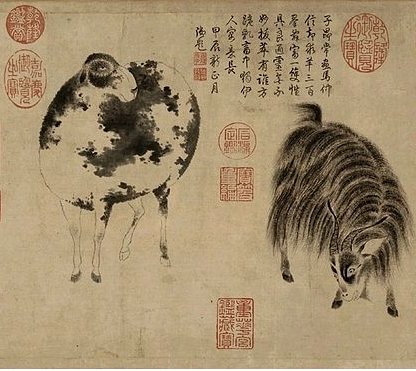 |
|
INVISIBLY CLOSE TO THE SUN: |
|
χ
Cancri (125.2),
BRIGHT FIRE =
λ
Cancri (125.4)
*84.0 = *125.4 - *41.4 |
AVIOR =
ε
Carinae (126.4),
φ
Cancri (126.8)
*85.0 = *126.4 - *41.4 |
Ο Ursae Majoris (127.4)
*86.0 = *127.4 - *41.4 |
Pushya-8
(Nourisher)
υ Cancri (128.1),
θ
Cancri (128.2) |
|
July 28 |
29 (210 → 420 / 2) |
30 |
31 (260 - 48) |
 |
 |
 |
 |
|
Ea8-1 |
Ea8-2 |
Ea8-3 |
Ea8-4 (260) |
|
E tamaiti |
ki te raa - te henua |
tagata haga |
ko te rima |
|
REVERSED NAKSHATRA → CLOSE TO THE
FULL MOON: |
|
MENKAURE
ROTTEN MELON =
ε
Delphini,
φ
Pavonis (311.2),
η
Delphini (311.4),
ζ
Delphini,
ρ
Pavonis (311.7)
PHAKT (α
Columbae)
ALNILAK (ζ Orionis)
*270.0 = *311.4 - *41.4 |
ROTANEV = β Delphini,
ι Delphini (312.3), τ Capricorni (312.6), κ Delphini (312.7),
SVALOCIN = α Delphini,
υ Capricorni, υ Pavonis (312.8) |
μ²,
μ¹
Oct. (313.2),
DENEB CYGNI (Tail of the Swan) =
α
Cygni
(313.5),
β
Pavonis (313.6),
δ
Delphini (313.8) |
Al Sa’d al Bula'-21 (Good Fortune of the Swallower)
/
Dhanishta-24 (Most Famous)
/
Girl-10 (Bat)
YUE (Battle-Axe) =
ψ
Capricorni
(314.3),
GIENAH
CYGNI = ε
Cygni,
η
Cephei (314.5),
γ
Delphini (314.6),
σ
Pavonis (314.7),
ALBALI = ε
Aquarii
(314.8)
BETELGEUZE (α Orionis) |
|
Jan 26 |
27 (208 + 184 = 392) |
28 |
29 (121 + 3 * 91) |
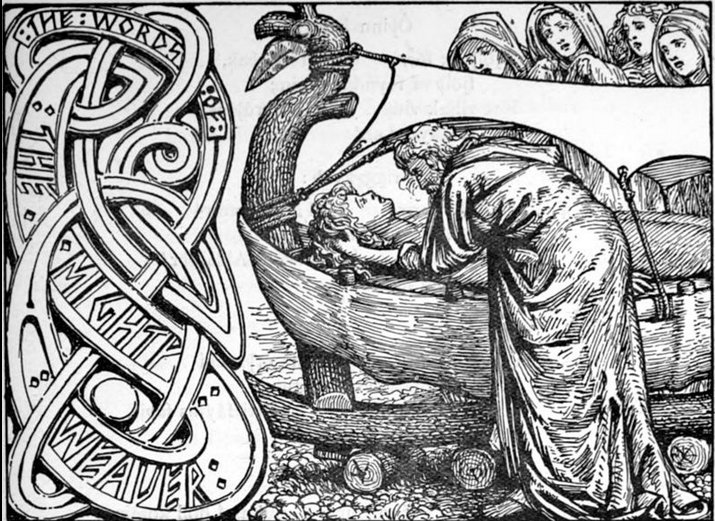 |
|
INVISIBLY CLOSE TO THE SUN: |
|
Āshleshā-9 (Embrace)
/
Willow-24 (Stag)
π¹
Ursa Majoris,
δ
HYDRAE (129.6),
AL
MINHAR AL SHUJĀ
= σ
Hydrae, MUSEIDA =
π²
Ursae Majoris
(129.9)
RAS
ALHAGUE (α Ophiuchi) |
Al Nathrah-6 (Gap)
BEEHIVE (Exhalation of Piled-up Corpses) = ε Cancri,
η Pyxidis (130.4), XESTUS = ο Velorum
(130.5), ζ Pyxidis (130.7),
ASCELLUS BOREALIS =
γ Cancri, β Pyxidis (130.9)
*89.0 = *130.4 - *41.4 |
Extended Net-26a (Ox)
/
Arkū-sha-nangaru-sha-shūtu-12
(Southeast Star in the Crab)
η
Hydrae (131.0),
ASCELLUS AUSTRALIS =
δ
Cancri
(131.4),
KOO
SHE =
Bow and Arrow
= δ
Velorum
(131.6),
α
Pyxidis (131.8),
ε
Hydrae (131.9)
*90.0 = *131.4 - *41.4 |
ι Cancri (132.0),
ρ Hydrae (132.4)
*91.0 = *132.4 - *41.4 |
I guess
one reason for the strange repetition might have been to point out the necessity to add 184 days to July 27 in
order to find January 27 by the reversed nakshatra method. Anciently
they regarded January as a month with
only 29 days.
We should
here compare the description on the Phaistos disc, where this
place (January 29-31) evidently could have been indicated as a single day although
composed by 3 signs fused together - implying not adding but subtracting 2 days:

|
1 |
11 |
1 |
|
8-petal flower |
8-petal flower |
|
 |
 |
|
1 |
13 |
|
60 |
24 |
23 |
1 |
10 |
6 |
|
bow |
blue lotus |
8-petal flower |
pole |
hen |
|
 |
 |
 |
 |
 |
|
74 |
75 |
76 |
77 |
78 |
 |
 |
 |
 |
 |
 |
 |
 |
 |
 |
|
11 |
12 |
13 |
14 |
15 |
16 |
17 |
18 |
19 |
20 |
 |
 |
 |
 |
 |
 |
 |
 |
 |
 |
|
21 |
22 |
23 |
24 |
25 |
26 |
27 |
28 |
29 |
30 |
|
28 |
37 |
2 |
9 |
14 |
 |
 |
 |
|
107
→ 73 + 34 |
108 |
109
→ 394 - 285 |
|
→
394
(Jan 29, *314) |
|
Ea8-2--4: |
|
*312 |
*313 |
*314
→ 285 + 29 |
|
Jan 27
(392) |
28 |
29 (121 + 3 * 91) |
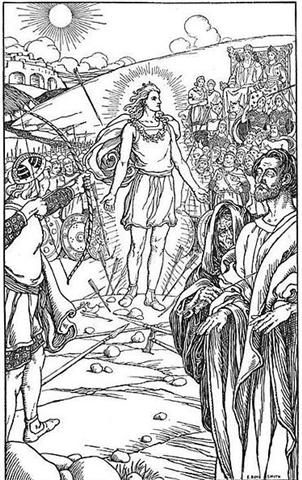
The E text
has
here, i.e. in its 'zero' day which
presumably refers to the day after right
ascension *314 signifying half a circle by
way of π, left a vaccant place in the
sequence of glyphs - for the
true measure of π is an indefinite
fraction more than
314.
By the way: 107
- 73 = 34 → number of
glyphs in line Ea8.
|
Aug 1 |
2 (214) |
3 |
4 (*136) |
5 |
|
... It was 4 August 1968, and it was the feast day of Saint
Dominic, patron of Santo Domingo Pueblo, southwest of Santa Fe.
At one end of the hot, dusty plaza, a Dominican priest watched
nervously as several hundred dancers arranged in two long rows
pounded the earth with their moccasined feet as a mighty,
collective prayer [ui] for rain, accompanied by the
powerful baritone singing of a chorus and the beat of drums. As
my family and I viewed this, the largest and in some ways the
most impressive Native American public ceremony, a tiny cloud
over the Jémez Mountains to the northwest got larger and larger,
eventually filling up the sky; at last the storm broke, and the
sky was crisscrossed by lightning and the pueblo resounded with
peals of rolling thunder ... |
|
no glyph |
 |
 |
 |
 |
|
(→
9 * 29) |
Ea8-6 |
Ea8-7 |
Ea8-8 (264) |
Ea8-9 |
|
- |
ki te vai |
(te hupee) |
kua tuu te hokohuki - te kiore |
te hoko huki - te kiore |
|
Hupee. Mucus; hupeehupee,
asthma. T Pau., Ta.: hupe,
mucus. Churchill. Ta.: Hupe,
mucus. (Sa.: isupē,
id.) Ma.: hupe,
id. Churchill. Rhume, air
froide. Jaussen according to
Barthel.
|
|
REVERSED NAKSHATRA → CLOSE TO THE
FULL MOON: |
|
BATEN ALGIEDI (Belly of the Goat) =
ω
Capricorni
(315.8) |
μ Aquarii (316.0) |
ε Equulei (317.8) |
No star listed (318) |
21h
(319.6)
ARMUS =
η
Capricorni
(319.0),
DORSUM =
θ
Capricorni
(319.3),
TSOO = 24 Capricorni
(319.7) |
|
Jan 30 |
31 |
Febr 1 |
2 |
3 (365 + 34 =
399) |
|
"Dec 20 (354) |
Solstice |
22 |
23 |
24 |
|
NOV 27 |
28 |
29 (333) |
30 |
DEC 1 (399 -
64) |
|
INVISIBLY CLOSE TO THE SUN: |
|
γ Pyxidis (133.6) |
ζ
Hydrae (134.1),
ρ
Cancri (134.2),
ζ
Oct.
(134.3), ο Cancri (134.6), δ Pyxidis (134.9) |
ACUBENS = α Cancri,
TALITHA BOREALIS = ι Ursae Majoris
(135.0), σ Cancri (135.2), ρ Ursa Majoris (135.6) |
ν Cancri (136.0),
TALITHA AUSTRALIS = κ Ursae Majoris
(136.1), ω Hydrae (136.8) |
9h (137.0)
σ¹ Ursa Majoris (137.0), κ Cancri (137.3),
τ Cancri (137.4),
ALSUHAIL (al
Wazn, of the Weight) = λ Velorum
(137.5), σ² Ursa Majoris (137.6), τ Ursa Majoris (137.7), ξ
Cancri (137.8)
*96.0 = *137.4 - *41.4 |
 |
In July
31 the Full Moon should ideally have been visible at the place where Betelgeuze would
culminate at 21h. And here was - at January
29 - ε Aquarii, the Swallow(er):
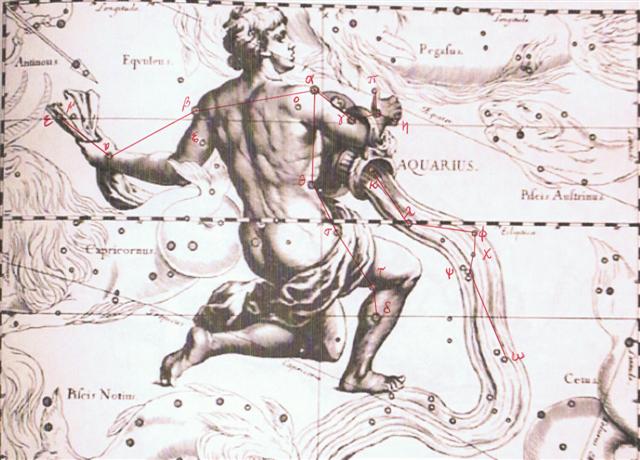

We must also remember that here was the Chinese
Girl station.
... And then the bone spoke; it was there in the fork
of the tree: Why do you want a mere bone, a round thing in the branches
of a tree? said the head of One Hunaphu when it spoke to the maiden. You
don't want it, she was told. I do want it, said the maiden. Very well.
Stretch out your right hand here, so I can see it, said the bone.
Yes, said the maiden. She stretched out her
right hand, up there in front of the bone.
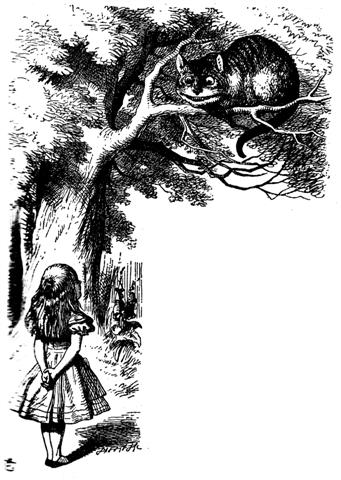
And then the bone spit out its saliva, which landed
squarely in the hand of the maiden. And then she looked in her hand, she
inspected it right away, but the bone's saliva wasn't in her hand. It is
just a sign I have given you, my saliva, my spittle. This, my head, has
nothing on it - just bone, nothing of meat. It's just the same with the
head of a great lord: it's just the flesh that makes his face look good.
And when he dies, people get frightened by his bones. After that, his
son is like his saliva, his spittle, in his being, whether it be the son
of a lord or the son of a craftsman, an orator. The father does not
disappear, but goes on being fulfilled. Neither dimmed nor destroyed is
the face of a lord, a warrior, craftsman, an orator. Rather, he will
leave his daughters and sons. So it is that I have done likewise through
you. Now go up there on the face of the earth; you will not die. Keep
the word. So be it, said the head of One and Seven Hunaphu - they were
of one mind when they did it ...
An adze is the instrument for levelling planks and hollowing out canoes and it is
oriented 90° away from the axe
used for splitting wood, felling trees and killing enemies.
On the Phaistos disc there is clearly an
axe depicted on its bottom side;
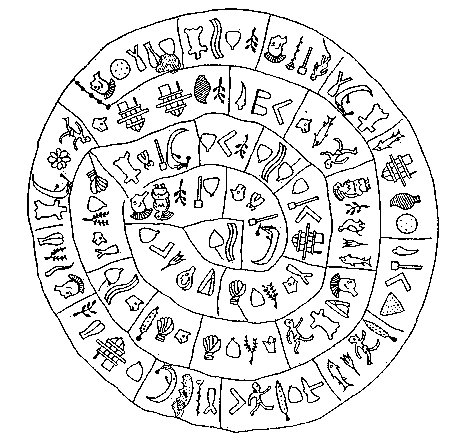
and its short handle suggests not a tool
for felling trees but rather a tool for ceremonial use (or possibly to be used in close combat). In other words it
ought to be a Battle-axe (→ ψ
Capricorni). From there to the end of side b there are 28
signs. This is the only instance on the disc where we can see such an axe.
|
19 |
88 |
35 |
28 |
|
breast |
battle axe |
 |
 |
|
1 |
90 (→ 213 - 123) |
|
118 (→ 4 * 29½) |
But if side a represents the top side and
side b the bottom side of the disc, then we
ought to reverse the order and connect the
flow from side a with the sequence of glyphs
on side b:
|
1 |
11 |
1 |
60 |
|
8-petal flower |
8-petal flower |
|
 |
 |
|
1 |
13 |
|
73 → 365 / 5
→ March 14 (→
3-14
→
π) |
|
24 |
23 |
1 |
10 |
6 |
28 |
|
bow |
blue lotus |
8-petal flower |
pole |
hen |
|
 |
 |
 |
 |
 |
|
74 |
75 |
76 |
77 |
78 |
|
5 |
|
37 |
2 |
9 |
14 |
 |
 |
 |
|
107
→ 73 + 34 |
108 |
109 → 394 - 285 |
|
→
394
(Jan 29, *314) |
|
Ea8-2--4: |
|
*312 |
*313 |
*314
→ 285 + 29 |
|
Jan 27
(392) |
28 |
29 (121 +
3 * 91) |
|
28 |
35 |
88 |
19 |
|
battle axe |
breast |
|
 |
 |
|
152
→ 394 - 242 |
241
→ 80 + 161 |
|
*357
→ 200 + 314 / 2 |
*446
→ 366 + 80 |
|
March 13 (72) |
June 10 (*81) |
... Midsummer is the
flowering season of the oak, which is the
tree of endurance and triumph, and like the
ash is said to 'court the lightning flash'.
Its roots are believed to extend as deep
underground as its branches rise in the air
- Virgil mentions this - which makes it
emblematic of a god whose law runs both in
Heaven and in the Underworld ... The month,
which takes its name from Juppiter the
oak-god, begins on June 10th
[161 + 16 = 177 =
354 / 2 = 6 * 29] and ends of July
7th. Midway comes St. John's Day, June 24th
[177 + 14 = 191],
the day on which the oak-king was
sacrificially burned alive. The Celtic year
was divided into two halves with the second
half beginning in July, apparently after a
seven-day wake, or funeral feast, in the
oak-king's honour
...
.jpg)
|

















.jpg)